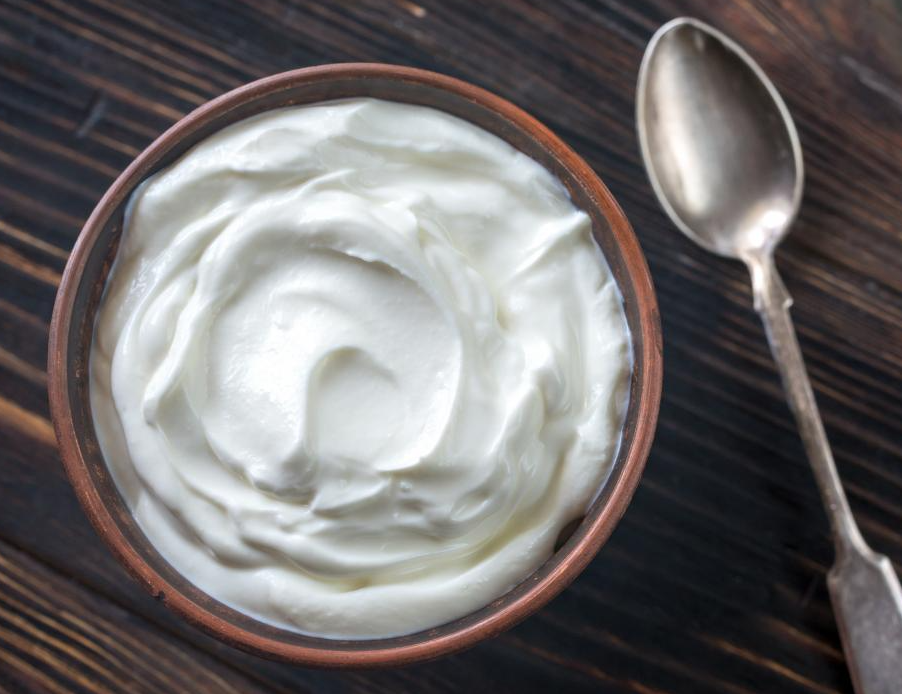Intro: Exploring Alternatives for Bolognese Sauce
Welcome to a culinary adventure like no other – a journey that takes us deep into the heart of Italian cuisine, where we unravel the secrets and explore the diverse possibilities of the beloved Bolognese sauce. Prepare to tantalize your taste buds and ignite your creativity as we embark on a quest to discover a myriad of alternative ingredients and cooking methods that can elevate this classic pasta sauce to new heights.
Bolognese sauce, also known as ragù alla Bolognese, is a rich and savory meat-based sauce hailing from Bologna, Italy. Traditionally made with minced beef, pancetta, onions, carrots, celery, tomatoes, wine, and milk, this delectable sauce has won the hearts of food enthusiasts worldwide. Its robust flavors and hearty texture make it a perfect complement to various pasta shapes, from tagliatelle to pappardelle, and it’s even versatile enough to be used in lasagna and other dishes.
Whether you’re a seasoned cook or an adventurous novice, this exploration into alternative Bolognese sauce is designed to ignite your passion for cooking and encourage you to get creative in your own kitchen. We invite you to join us on this gastronomic adventure as we unlock the secrets of Bolognese sauce’s incredible versatility, and uncover the delights of combining tradition with innovation. So buckle up, grab your apron, and let’s dive into the world of flavors waiting to be discovered in the realm of Bolognese sauce!
12 Substitutes for Red Wine in Bolognese Sauce
When substituting red wine in Bolognese sauce, you can use various non-alcoholic or alcoholic options to enhance the flavor. Here are 12 substitutes you can try:
1 – Grape Juice
Grape juice can be an excellent alternative to red wine in Bolognese sauce, providing a unique and flavorful twist to this classic Italian dish. Red wine is commonly used in Bolognese sauce to add depth, acidity, and a rich taste, but using grape juice can offer a non-alcoholic option while still enhancing the dish’s overall profile.
When using grape juice as a substitute, it’s essential to select a high-quality, 100% grape juice to ensure the best results. The juice should be free of additives or preservatives to maintain the natural taste of the grapes. The sweetness of the grape juice complements the savory elements of the Bolognese sauce, adding a touch of fruity complexity.
To substitute red wine with grape juice, use the same amount called for in the recipe. Simmer the sauce slowly to allow the flavors to meld together and reduce the grape juice, concentrating its taste. This process will create a rich and robust sauce that closely resembles the traditional Bolognese.
Moreover, grape juice offers health benefits, as it is rich in antioxidants and essential nutrients. It provides a natural sweetness that can balance the acidity of tomatoes and harmonize the flavors of the herbs and spices used in the sauce.
Using grape juice as an alternative allows everyone to enjoy the Bolognese sauce, even those who cannot consume alcohol or prefer not to. This makes the dish more inclusive during family dinners, gatherings, or when catering to individuals with dietary restrictions.
In conclusion, grape juice is an excellent substitute for red wine in Bolognese sauce, offering a delightful and healthier twist to the traditional recipe. With its fruity sweetness and health benefits, it can transform the dish into a crowd-pleasing favorite for all to enjoy.
2 – Beef or vegetable broth
Beef or vegetable broth can be an excellent alternative to red wine in Bolognese sauce, providing a delicious and flavorful substitution. While red wine adds depth and complexity to the traditional Bolognese recipe, broth can offer its own unique attributes.
Beef broth, being rich and savory, complements the meaty elements of the Bolognese sauce. It infuses the dish with umami flavors and maintains the richness associated with the classic Italian sauce. The natural gelatin from the broth also contributes to a silky texture, enhancing the overall mouthfeel.
On the other hand, vegetable broth is an ideal option for vegetarians or those who prefer a lighter alternative. It brings a subtle earthy taste to the sauce, combining well with the vegetables and herbs commonly used in Bolognese. With the right selection of herbs and spices, vegetable broth can elevate the flavors to match the complexity of wine.
To substitute red wine with broth, use an equal amount of broth as the recipe calls for wine. This ensures that the sauce maintains its intended consistency and balance. Additionally, consider adding a touch of balsamic vinegar or red wine vinegar to mimic the acidity found in wine, as it helps to balance the flavors.
Remember, while broth can be a fantastic alternative, it may lack the alcohol’s deglazing properties that wine provides. To compensate, you can use a small amount of water to deglaze the pan and extract the flavorful browned bits after sautéing the meat and vegetables.
Overall, whether you choose beef or vegetable broth, the key is to taste as you go and adjust seasonings accordingly. By doing so, you can create a Bolognese sauce that caters to your preferences, dietary needs, and still delights your taste buds with its delicious flavors.
3 – Tomato Juice
Tomato juice serves as a fantastic alternative to red wine in Bolognese sauce, catering to both non-alcoholic preferences and those seeking a healthier option. It provides a tangy, slightly acidic, and robust flavor that complements the other ingredients, creating a rich and savory taste profile similar to red wine.
The acidity in tomato juice acts as a natural tenderizer, helping to break down the proteins in the meat and infusing it with flavors. The juice also contains umami notes, enhancing the overall depth of the sauce. For the best results, opt for high-quality tomato juice without added sugars or preservatives.
To use tomato juice as a substitute for red wine in Bolognese, start by sautéing your onions and garlic in olive oil until they turn translucent. Then, add your choice of ground meat and cook until browned. Pour in the tomato juice and let it simmer, allowing the flavors to meld together. You can also add a touch of vegetable or chicken broth to mimic the moisture and complexity that red wine contributes.
When using tomato juice, consider adding a pinch of dried herbs like basil, oregano, and thyme, or fresh herbs like rosemary and bay leaves to further elevate the taste. To balance the acidity, a pinch of sugar can be added, but be cautious not to over-sweeten the sauce.
The end result will be a delectable Bolognese sauce that boasts all the rich flavors one expects, without the alcohol content. This alternative is perfect for families, guests, or anyone who prefers a non-alcoholic option. Moreover, it accommodates dietary restrictions without compromising on taste or authenticity.
Whether you’re seeking a tomato juice alternative due to personal preference, health reasons, or simply to accommodate a non-drinker, rest assured that it will deliver a satisfying and flavorful Bolognese sauce that is sure to impress even the most discerning palates.
4 – Red Wine Vinegar
Red wine vinegar can be a suitable substitute for red wine in Bolognese sauce, offering a tangy and slightly acidic flavor that complements the dish. While it may not provide the same depth and complexity as red wine, it still adds a delightful twist to the sauce.
When using red wine vinegar as a substitute, it’s essential to remember a few key considerations. First, red wine vinegar is much more acidic than red wine, so you’ll want to use it sparingly to avoid overpowering the dish. Start with a smaller amount and taste as you go, adjusting to your preference.
Additionally, red wine vinegar lacks the alcohol content present in red wine, which plays a role in deglazing the pan and enhancing the overall flavors in the sauce. To mimic this effect, you can add a small amount of beef or vegetable broth to the Bolognese while cooking to maintain the liquid component.
While red wine contributes fruity notes, red wine vinegar imparts a tangy and sharp flavor. To balance the taste, you might consider adding a pinch of sugar or a dollop of honey to offset the acidity and create a more well-rounded sauce.
Another alternative to enhance the depth of the Bolognese is by incorporating some tomato paste, which will add richness and umami flavors. You can also include aromatic herbs like thyme, rosemary, and bay leaves to further enhance the taste profile.
Overall, while red wine vinegar can be a suitable substitute for red wine in Bolognese sauce, keep in mind that the flavors will differ. The best approach is to experiment with the measurements and additional ingredients to achieve the desired taste and consistency. Enjoy the process of creating a unique and flavorful Bolognese sauce tailored to your preferences!
5 – Pomegranate Juice
Pomegranate juice can serve as a delightful and healthy alternative to red wine in Bolognese sauce, imparting a unique and vibrant flavor profile to the traditional Italian dish. While red wine is often used to add depth and richness to the sauce, pomegranate juice brings its own set of distinctive qualities to the table.
First and foremost, pomegranate juice offers a sweet-tart taste that can beautifully complement the savory notes of the Bolognese. It adds a refreshing and tangy element that balances the richness of the meat and tomatoes, creating a well-rounded taste that appeals to a wide range of palates.
Beyond its flavor, pomegranate juice is a rich source of antioxidants and vitamins, making it a healthier option compared to alcoholic red wine. It contains polyphenols and anthocyanins, which have been associated with various health benefits, including heart health and reducing inflammation.
Another advantage of using pomegranate juice is that it is non-alcoholic, making the Bolognese sauce suitable for individuals who prefer or require alcohol-free options. This is especially beneficial for those who are avoiding alcohol due to health reasons, dietary restrictions, or personal preferences.
When using pomegranate juice in Bolognese, it is essential to adjust the other ingredients accordingly to maintain the desired consistency and taste. Adding a splash of balsamic vinegar can help to enhance the depth of flavors and acidity that the wine would typically contribute.
Overall, incorporating pomegranate juice as a substitute for red wine in Bolognese sauce offers a fresh and wholesome twist to a classic recipe, ensuring a delicious and nutritious meal for everyone to enjoy. So whether you’re exploring new flavors or catering to specific dietary preferences, pomegranate juice is an excellent choice to elevate your Bolognese to a whole new level.
6 – Cranberry Juice
Cranberry juice can be an excellent alternative to red wine in Bolognese sauce, especially for those who prefer to avoid alcohol or have dietary restrictions. The deep, rich flavor of cranberry juice complements the savory and hearty elements of the Bolognese, providing a tangy and slightly sweet profile that enhances the overall taste of the dish.
One of the primary reasons cranberry juice works well in this context is its acidity. Like red wine, cranberry juice adds acidity to the sauce, which helps to balance the flavors and cut through the richness of the meat and tomatoes. This acidity also helps to tenderize the meat, resulting in a more succulent and flavorful final dish.
Furthermore, cranberry juice brings its own unique health benefits to the table. It is well-known for its high levels of antioxidants, which can be beneficial for the body’s overall well-being. Additionally, cranberry juice is a good source of vitamins C and E, further enhancing the nutritional value of the Bolognese sauce.
When using cranberry juice as a substitute for red wine in Bolognese, it’s essential to adjust the amount used in the recipe. Since cranberry juice is sweeter than red wine, you may need to use less and balance the sweetness with additional savory seasonings such as garlic, onions, and herbs like oregano or thyme.
For a non-alcoholic version, cranberry juice provides a flavorful base, and you can also experiment with other fruit juices like pomegranate or cherry juice to add complexity to the sauce. Additionally, vegetable or beef broth can be used in combination with cranberry juice to achieve a more savory depth in the Bolognese.
Overall, substituting red wine with cranberry juice in Bolognese can be a delightful and healthier choice without compromising on taste and flavor. It allows everyone, including non-drinkers and those with dietary restrictions, to enjoy a delicious and satisfying pasta dish that suits their preferences and dietary needs.
7 – Balsamic Vinegar
Balsamic vinegar can be an excellent alternative to red wine in Bolognese sauce, providing a unique twist to the traditional recipe. Bolognese is a rich and savory Italian meat-based sauce that typically incorporates red wine to enhance the flavors and add depth. However, some individuals may prefer not to use wine or might not have it on hand. In such cases, balsamic vinegar can come to the rescue.
Balsamic vinegar offers a rich, sweet, and tangy flavor profile that complements the hearty meatiness of Bolognese sauce. It is made from freshly crushed grape juice that is aged through a meticulous process, resulting in a complex and concentrated flavor. The natural sweetness of balsamic vinegar can help balance the acidity and add depth to the sauce, while its intense flavor can infuse the dish with a delightful aromatic dimension.
To use balsamic vinegar as a substitute, simply replace the amount of red wine in the Bolognese recipe with an equal amount of balsamic vinegar. Be mindful of its potency, as it can easily overpower the other ingredients if too much is used. You may want to start with a smaller quantity and gradually adjust to your taste preference.
The addition of balsamic vinegar can also enhance the sauce’s color, giving it a deeper and more appetizing appearance. Its natural acidity can also help tenderize the meat and intensify the overall umami experience.
Overall, the use of balsamic vinegar as an alternative to red wine in Bolognese sauce can be a delightful choice for those looking to experiment with flavors or avoid alcohol. It offers a creative twist to the classic recipe while maintaining the richness and complexity that make Bolognese a beloved Italian dish. So, don’t hesitate to give it a try and savor the delectable results!
8 – Red Grape Juice Concentrate
Red grape juice concentrate can be an excellent alternative to red wine in Bolognese sauce, especially for those who prefer not to consume alcohol or for recipes that cater to a non-alcoholic audience. This substitute offers a rich and deep flavor profile, reminiscent of red wine, that complements the robust taste of the Bolognese sauce.
The concentrate is made by reducing fresh red grape juice, intensifying its natural sweetness and fruity notes. Its thick consistency ensures that it won’t dilute the sauce while providing a slightly sticky texture that helps to bind all the ingredients together.
When using red grape juice concentrate as a substitute, it’s crucial to consider the flavor balance. While red wine contributes acidity and complexity, the concentrate brings sweetness and a concentrated fruitiness. To maintain the proper acidity, consider adding a splash of red wine vinegar or a tangy ingredient like diced tomatoes.
Furthermore, the grape juice concentrate retains the health benefits of red grapes, including antioxidants, polyphenols, and vitamins, making it a more nutritious option than red wine, which contains alcohol and fewer nutrients.
The substitution is quite straightforward; typically, you can replace red wine with an equal amount of red grape juice concentrate in the Bolognese sauce recipe. However, since it’s more concentrated, you may want to start with a smaller amount and gradually adjust to taste.
Overall, using red grape juice concentrate as an alternative in Bolognese sauce ensures a delectable and alcohol-free dish that can be enjoyed by a wider range of individuals, including children and those who abstain from alcohol, without compromising on flavor or quality.
9 – Chicken or Turkey Stock
If you’re looking for an alternative to red wine in your Bolognese sauce, chicken or turkey stock can be an excellent choice. While red wine imparts a rich and complex flavor to the sauce, using a flavorful stock can still bring depth and umami to your dish. Here are some reasons why chicken or turkey stock works well as a substitute:
- Flavor infusion: Just like red wine, chicken or turkey stock is packed with natural flavors from bones, vegetables, and herbs, which will infuse the sauce with a savory taste.
- Umami boost: Both stocks contain glutamate, an amino acid responsible for the umami taste. Umami enhances the overall flavor profile of your Bolognese, making it more satisfying and delicious.
- Versatility: Chicken or turkey stock is a versatile cooking ingredient that complements a wide range of dishes, including Bolognese. Its neutral flavor won’t overpower other ingredients, allowing the traditional flavors of the Bolognese to shine through.
- Healthier option: If you’re looking to reduce alcohol intake or cooking for individuals who cannot consume alcohol, stock is an alcohol-free alternative that won’t compromise on taste.
- Lighter taste: While red wine can add a slight tang and acidity to the sauce, chicken or turkey stock offers a milder taste, which may be preferable for some palates.
To use chicken or turkey stock as a substitute for red wine, simply replace the amount of wine called for in your Bolognese recipe with an equal amount of stock. This substitution will still result in a delicious, hearty sauce that pairs well with pasta, providing a satisfying meal for all to enjoy. Don’t forget to adjust the seasoning to your taste, and feel free to experiment with different stocks to find the one that best suits your preferences!
10 – Non-alcoholic Red Wine
Non-alcoholic red wine alternatives have gained popularity as substitutes for traditional red wine in various culinary applications, including Bolognese sauce. These non-alcoholic alternatives provide a flavorful and healthier option for those who prefer to avoid alcohol or for those who may have dietary restrictions.
Non-alcoholic red wines are made from grape juice or grape must, just like their alcoholic counterparts, but the fermentation process is halted before alcohol is produced. This ensures that the flavor profiles of these wines closely resemble traditional red wines, with the rich and robust characteristics that are essential for enhancing the taste of Bolognese sauce.
Using non-alcoholic red wine in Bolognese sauce imparts a similar depth and complexity to the dish, along with the characteristic fruity and earthy notes typical of red wine. The wine helps to intensify the overall flavor of the sauce, creating a more balanced and refined taste. The acidity and tannins in the non-alcoholic wine also play a crucial role in tenderizing the meat and enhancing the sauce’s texture.
One of the significant advantages of using non-alcoholic red wine is that it makes the Bolognese sauce suitable for all age groups and dietary preferences, including pregnant women and individuals who abstain from alcohol for personal or religious reasons. It also caters to health-conscious individuals who aim to reduce their alcohol intake or avoid it entirely.
Additionally, the non-alcoholic nature of these wines means that the alcohol content is virtually nonexistent, making it a safe option for those with alcohol sensitivities or allergies. It also ensures that the sauce remains alcohol-free, which can be a crucial factor when preparing meals for kids or individuals with certain health conditions.
When using non-alcoholic red wine as a substitute in Bolognese sauce, it is essential to select a high-quality product with a taste profile that complements the other ingredients. Experimenting with different brands can help find the one that best suits the specific taste preferences and requirements of the dish.
In conclusion, non-alcoholic red wine alternatives serve as an excellent substitute for traditional red wine in Bolognese sauce, providing a similar depth of flavor without the alcohol content. This option opens up the dish to a broader audience and ensures that everyone can enjoy the rich and savory goodness of a classic Bolognese without any concerns about alcohol consumption.
11 – Red wine essence
Red wine essence is a concentrated liquid that captures the essential flavors and aromas of red wine. It can serve as a viable substitute for actual red wine in a Bolognese sauce when wine is either unavailable or undesirable due to dietary, religious, or personal reasons.
The main advantage of using red wine essence is its long shelf life, making it a practical and convenient option for occasional cooks or those who don’t frequently use wine in their recipes. It is also more affordable than purchasing a whole bottle of quality red wine, which may end up going to waste if not used entirely.
When using red wine essence in a Bolognese sauce, it’s important to dilute it with an appropriate amount of water to mimic the flavor and acidity of regular wine. This will ensure that the sauce maintains a well-balanced taste and doesn’t become too overpowering. Additionally, chefs can adjust the concentration to their liking, allowing for greater control over the flavor profile of the sauce.
While red wine essence is a useful alternative, it’s essential to recognize that it lacks some of the complexities that actual red wine imparts during cooking. The subtle nuances and interactions with other ingredients may not be as pronounced with the essence, but it can still provide a satisfactory result.
For those who prefer to avoid alcohol entirely, red wine essence offers an alcohol-free solution while still delivering a hint of wine flavor to the Bolognese sauce. This makes it suitable for families, individuals with alcohol sensitivities, or for dishes meant to be served to children.
In conclusion, red wine essence can be a practical and flavorful substitute for red wine in Bolognese sauce. It offers convenience, affordability, and versatility while still providing a taste reminiscent of red wine, making it an excellent option for those seeking a non-alcoholic or shelf-stable alternative. Experimenting with different concentrations will help achieve the desired taste and ensure a delightful culinary experience.
12 – Water
Using water as a substitute for red wine in Bolognese sauce can be a viable option for various reasons. While wine is commonly used to enhance the flavors and add depth to the sauce, water can still contribute to achieving a delicious and satisfactory result.
Water acts as a neutral liquid that won’t introduce any additional flavors, ensuring that the other ingredients remain the focus. This can be particularly useful if you prefer a milder taste or want to avoid the alcohol content found in wine.
Moreover, water helps to maintain the desired consistency of the Bolognese sauce. It allows the ingredients to simmer and meld together without overpowering the natural flavors of the meat, vegetables, and herbs.
By using water, the Bolognese sauce becomes a healthier option, as it reduces the overall calorie and alcohol content. This can be beneficial for those looking to reduce their caloric intake or for individuals who avoid alcohol due to dietary or personal reasons.
One potential drawback of using water is that it may not provide the same depth of flavor that red wine does. Wine brings complexity and richness to the sauce that water cannot replicate entirely. However, you can compensate for this by incorporating other flavor-enhancing ingredients such as balsamic vinegar, Worcestershire sauce, or beef broth.
Ultimately, the choice between water and red wine in Bolognese sauce comes down to personal preference and dietary considerations. If you choose to use water as a substitute, experiment with additional seasonings and ingredients to ensure a well-balanced and flavorful sauce that suits your taste buds.
Conclusion
In conclusion, delving into the diverse world of substitutes for red wine in Bolognese not only caters to the culinary needs of wine abstainers but also presents an exciting opportunity for culinary enthusiasts and adventurous home cooks to explore new dimensions of flavor. The versatility and creativity that come with these alternative ingredients showcase the adaptability of the classic Bolognese sauce, allowing it to harmonize with a wide range of tastes and dietary preferences.
One of the most popular and readily available substitutes for red wine in Bolognese is beef broth or stock. Its rich, savory essence effortlessly complements the other ingredients, adding depth and complexity to the sauce without overpowering it. Meanwhile, vegetable broth can be a perfect option for vegetarians and vegans, lending a delicate yet robust flavor to the sauce that blends harmoniously with the aromatic vegetables.
For those seeking a hint of acidity to balance the dish, balsamic vinegar proves to be a worthy contender. Its tangy notes infuse the Bolognese with a delightful zing, reminiscent of a well-matured wine. On the other hand, pomegranate juice offers a surprising touch of fruitiness, complementing the meat and tomato combination in the sauce, resulting in a unique and delightful twist.
Another intriguing substitute worth exploring is the addition of cranberry juice or sauce. Its subtle sweetness subtly enhances the Bolognese, counterbalancing the savory components, and creating a flavor profile that is both comforting and enticing. Likewise, tomato juice provides a natural alternative, intensifying the tomato essence while preserving the essence of the traditional Bolognese.
For those who appreciate the complexity of Asian flavors, soy sauce can be an unexpected but delightful substitution. Its umami-rich character adds a fascinating dimension to the sauce, infusing it with a savory depth that pairs wonderfully with the meat and vegetables. Moreover, Worcestershire sauce, with its blend of tangy, sweet, and savory notes, also proves to be an exceptional choice, elevating the Bolognese to new heights of tastefulness.
For those who enjoy the subtle touch of herbs, thyme, rosemary, and oregano emerge as worthy companions to the traditional Bolognese recipe. Their aromatic qualities and earthy undertones contribute a delightful herbaceousness to the sauce, imbuing it with a fragrant allure that tantalizes the senses.
Moreover, for a touch of decadence and creaminess, milk or heavy cream can be used as an alternative to red wine. By adding a luscious texture and richness to the sauce, these dairy options impart a velvety mouthfeel that accentuates the savory elements in the Bolognese.
Ultimately, the beauty of exploring substitutes for red wine in Bolognese lies in the boundless possibilities they offer. As we embrace culinary innovation and adapt to ever-changing lifestyles and dietary needs, these twelve alternatives inspire us to experiment, enhance, and tailor our Bolognese recipes to perfection. Whether it’s a special occasion, a dietary preference, or simply a desire to try something new, these substitute options are sure to delight and satisfy all palates.
In conclusion, the world of Bolognese sauce is brimming with delicious and enticing possibilities. By embracing these substitutes for red wine, we can elevate our culinary experiences to new heights, celebrating the versatility and adaptability of this cherished Italian dish. So, whether you find yourself wine-less, curious about new flavors, or simply seeking to cater to diverse tastes, don’t hesitate to embark on a gastronomic journey through the world of Bolognese substitutes. With these alternative ingredients, the Bolognese sauce remains a timeless classic, accommodating and inspiring palates all around the globe. Happy cooking!










Leave a Reply